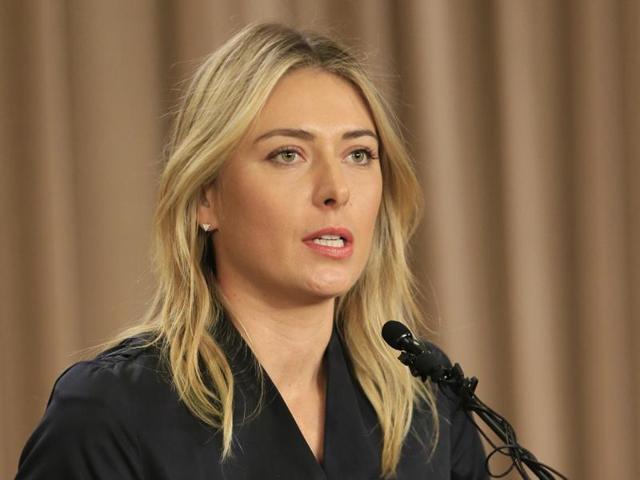Maria Sharapova’s ‘mistake’: Is tennis in denial about doping?
Andre Agassi’s confession in his autobiography ‘Open’ sent shockwaves through the tennis fraternity. Martina Hingis’ suspension on her second comeback had tongues wagging. But with Maria Sharapova’s own admission of a failed drug test on Monday night in Los Angeles, the hushed whispers have found a stronger voice.
Andre Agassi’s confession in his autobiography ‘Open’ sent shockwaves through the tennis fraternity. Martina Hingis’ suspension on her second comeback had tongues wagging. But with Maria Sharapova’s own admission of a failed drug test on Monday night in Los Angeles, the hushed whispers have found a stronger voice.

Organisers, for years, have claimed tennis is a clean sport. Backed by the best players in the world like Novak Djokovic, Roger Federer and Andy Murray, they all, however, want more testing. After the fiasco that hit the Russian track and field body last year, 17-time Swiss Grand Slam champion Federer raised eyebrows when he said, “I’m always surprised. I win a tournament, walk off the court, and it’s like, ‘where’s the doping guy?’”
Though Agassi’s revelation about using crystal meth and not being punished for it, or Hingis testing positive for a metabolite of cocaine in 2007, both recreational drugs, had authorities try and step up their game, Sharapova’s confession has simply rocked the sport with players and authorities forming sides. When the highest-earning woman athlete for 11 years in a row publicly speaks of a failed drug test — little-known WADA-banned drug meldonium for the uninitiated — it becomes the biggest story in media.
Why was meldonium banned?

Meldonium was banned by the World Anti-Doping Agency from January 1, 2016. After months of tracking the effects of the drug, WADA found that the drug increases blood flow, thereby increasing oxygen-carrying capacity in the blood and thus increasing the capacity of athletes to push their physical limits.
Sharapova has stated she used it for 10 years legally for health reasons and wasn’t aware it was banned because of an oversight on her part when she failed to see the list attached to the email sent by WADA in December last year.
Tennis has a history

In recent years, Sharapova isn’t the only tennis player to have failed a drug test. Former US Open champion Marin Cilic was given a nine-month ban in 2013 when traces of nikethamide were found in his sample. He claimed it was because of over-the-counter glucose tablets and had his ban reduced to four months after taking his case to the Court of Arbitration for Sport (CAS).
Serbian Viktor Troicki found support in compatriot Djokovic when he was banned for 18 months in 2013 for refusing to take a blood test citing a phobia of needles. He maintained his innocence and his ban was reduced to 12 months by the CAS.
But Richard Gasquet’s positive test for cocaine in 2009 where he claimed to have ingested the substance inadvertently after kissing a girl in a nightclub and getting all charges dropped had everyone talking for months.
But none of them are Maria Sharapova.
Money matters

Sharapova’s career earnings from tennis are close to £26 million (around Rs 248.5 crore) while her earnings from sponsorships were close to $23 million (around Rs155 crore) last year alone. With Nike, TAGHeuer and Porsche suspending ties with the Russian almost immediately after her admission, the 28-year-old’s image has taken a hit.
Read | Porsche follows Nike, TAGHeuer in cutting ties with Maria Sharapova
Provisionally suspended from March 12, if found guilty, Sharapova could be banned for up to four years according to WADA guidelines.
When the Tennis Anti-Doping Programme (TADP) came under the scanner for insufficiency, the body administered by the International Tennis Federation (ITF) and financed by contributions from the Association of Tennis Professionals (ATP), Women’s Tennis Association (WTA) and Grand Slams, increased its testing significantly.
In a study conducted in 2014, TADP conducted more than 3500 tests annually, of which 1400 where out of competition. The top 50 ATP players were tested more than seven times a season while the top 50 women between four to six times. In 2015, a total of 4433 players had been tested (out of competition, for blood and urine).
Whereabouts
However, the out-of-competition testing has disagreed with world No 1 Djokovic when he had said: “The whereabouts demands are a bit too much… If you don’t appear at the place where it is written down, then you get a warning, then two warnings and then suspension. The tennis season is long… In the off season you are going back and forth and changing cities and locations and it can be hard to track down and fill in the whereabouts sheet”.
Biological passport
The biological passport was also introduced in tennis in 2013. The passport uses blood tests to detect the likelihood of doping rather than test for specific substances. The passport is most effective when a player has been given three to five blood tests. It was introduced because the ITF had been criticised for not carrying out enough blood tests, a sure way of catching drug cheats.
Despite all these measures by the ITF, nothing beats former head of ATP Anti-Doping Programme Richard Ings’ pinned tweet. He asks: “Why do athletes dope? Because doping works and because the anti-doping industry is ineffective at catching anyone”.
With match fixing allegations breaking during the Australian Open this year and the image of the sport in question, it remains to be seen how the Sharapova scandal is dealt with. Will she get a lenient deal or will ITF use her admission to clean the image of the sport?
Read more:
Sharapova, the businesswoman’s empire crumbles after doping scandal
Doping now shadows Maria Sharapova’s incredible rags-to-riches story




